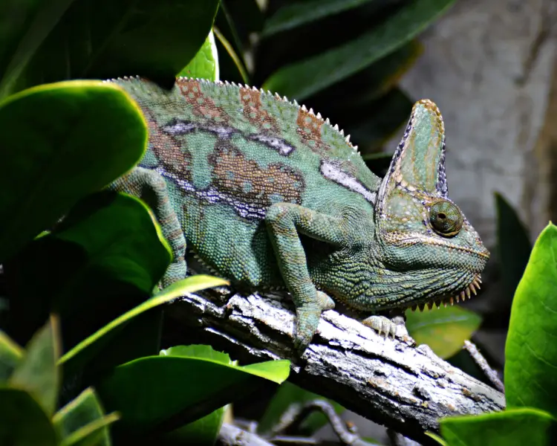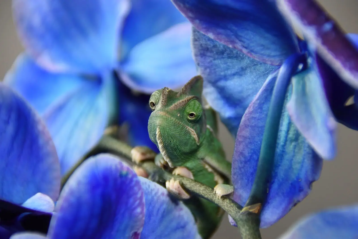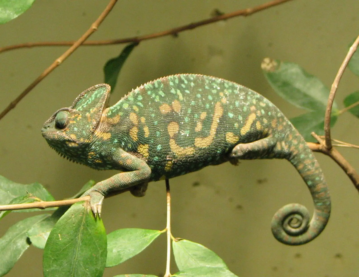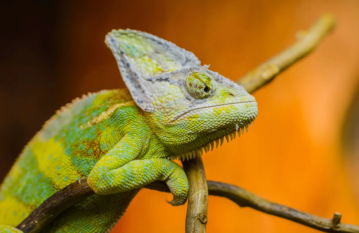Yemen Chameleon
Reptilarium Animals
Yemen Chameleon
Conservation status (Least Concern)



The Veiled chameleon is a species of large chameleon that lives in the Arabian Peninsula. They are named for the triangular protrusion on their heads, which is known as a casque. Both sexes have a casque which grows larger as the chameleon matures. Newly hatched young are pastel green in colour and develop stripes as they grow. Adult females are green with white, orange, yellow, or tan mottling. Adult males are brighter with more defined bands of yellow or blue and some mottling. The coloration of these reptiles can be affected by several factors, including social status. Females for instance change colour across their reproductive cycles. Chameleons also tend to change to a much darker colour when stressed.
Veiled chameleons are omnivorous (insectivorous, frivolous) creatures. They favour insects, and will also eat plant matter, especially as a source of water.
Veiled chameleons are found in Yemen and Saudi Arabia. They live in a number of habitat types in their native range, including plateaus, mountains, trees and bushes, and valleys. They prefer warmer temperatures and require areas with vegetation.
Veiled chameleons are arboreal, living in trees and other large plants. When moving along branches they sway from side to side to look like a leaf. When these chameleons hunt their prey, they freeze and wait for prey to approach them. The eyes of chameleons can rotate 180 degrees and move independently of each other. This means that they can look in any direction without moving their head. Veiled chameleons are shy in nature and lead a solitary life. Males are very territorial and are very aggressive with each other. They constantly patrol and defend their territories. Veiled chameleons use their coloration to establish dominance and communicate with one another. Brighter coloured individuals are more dominant than duller coloured chameleons. When feeling threatened Veiled chameleons coil themselves in a tight fetal position, and become darker in colour. Only when they feel safe, chameleons will uncoil themselves and come back to their normal state again. These reptiles are not very vocal, however, if to touch them quiet grunting or purring can be felt. They make this sound when they feel threatened. They may also hiss to warn predators to stay away from them.


There are no major threats to Veiled chameleons at present. They are the most common chameleons in the pet trade and exports from Arabia have declined in recent years and these animals are mostly bred in captivity. However, they are still collected from the wild and sold as souvenirs to tourists. These reptiles also suffer locally from road kills.

